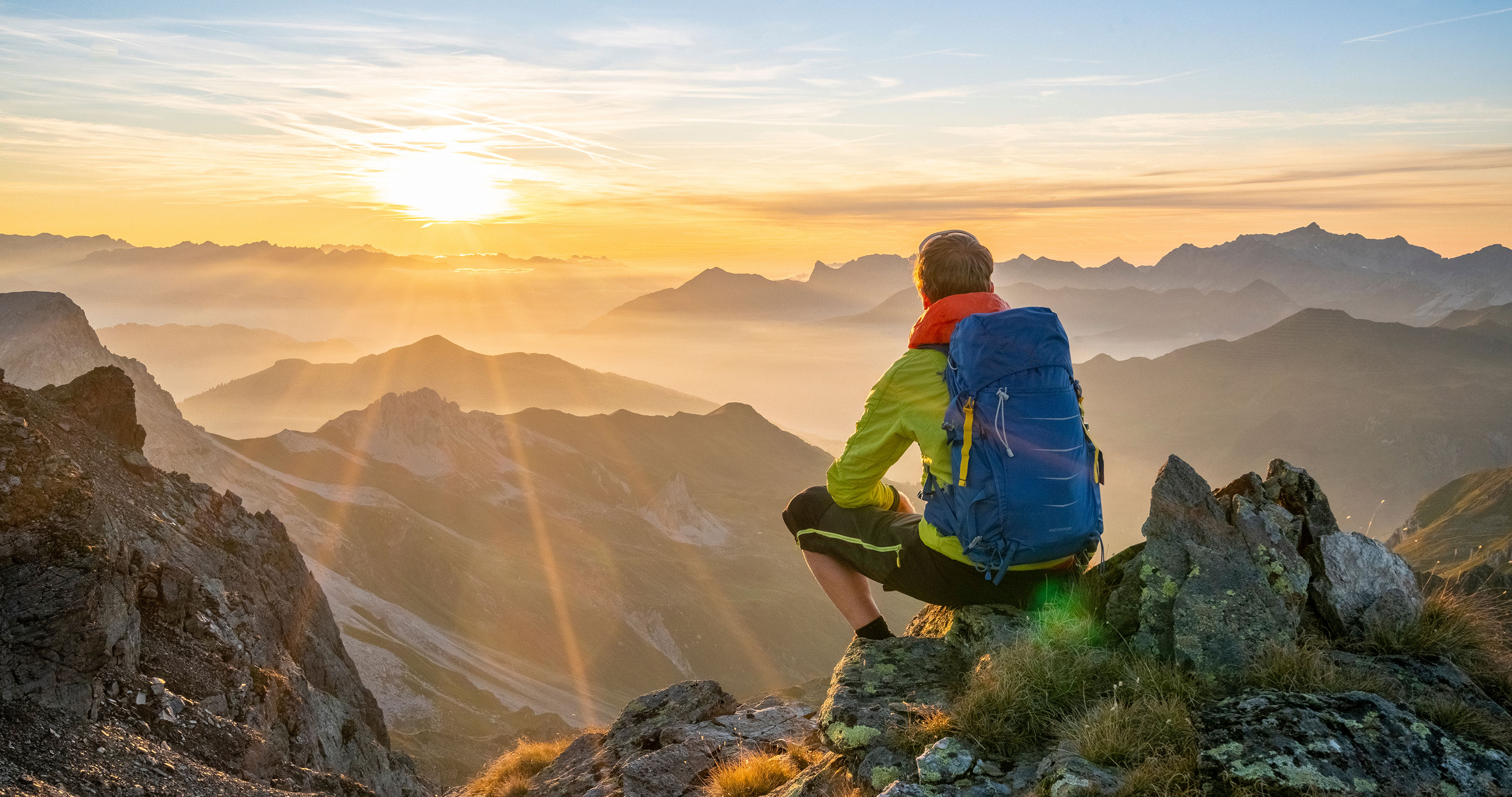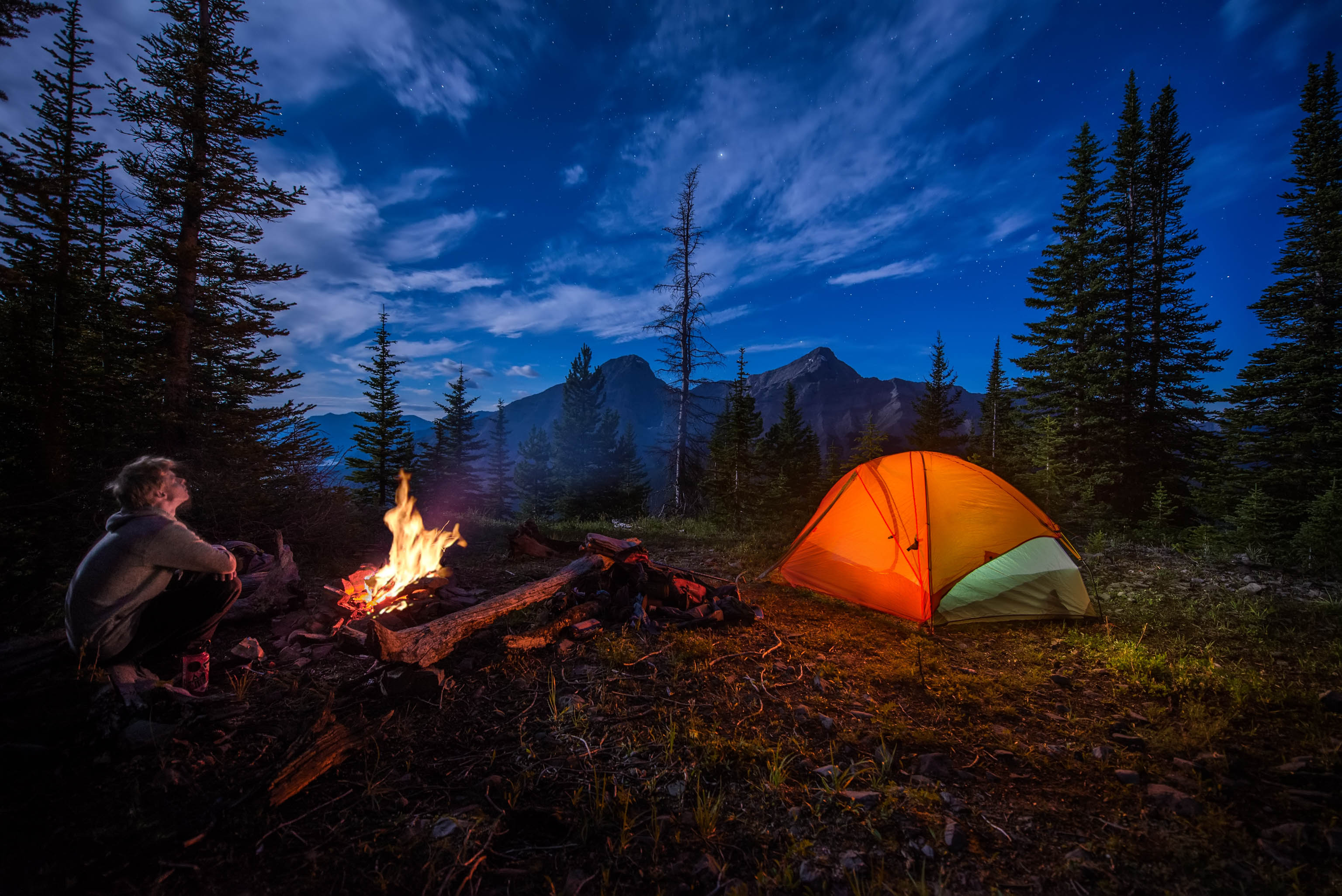Updated on
-
SNEAK PEAK – THE 5 KEY TIPS
- Basic bushcraft gear consists of a bushcraft knife, a tarpaulin, cords and eating and drinking utensils.
- Warm, hard-wearing hiking clothes are the ideal things to wear. Waterproof trekking boots make great bushcraft boots.
- Bushcrafting doesn’t require much previous experience. But a good sense of direction and manual dexterity do help.
- Depending on whether you prefer to teach yourself or learn bushcraft from others, you can bushcraft on your own or in a group.
- But on your first bushcraft adventure, you shouldn’t bite off more than you can chew. In particular, no fires. Campfires are only allowed on private property and designated areas and should be carefully supervised.
For more in-depth information, read the whole article.
- What is bushcraft? And what’s survival?
- What bushcraft gear do I need?
- What’s the best bushcraft knife?
- Where’s bushcrafting allowed?
- What skills should a bushcraft beginner have?
- Is bushcraft better on your own or in a group?
- How do I plan my first bushcraft adventure?
Thousands of people follow Alex Wander’s bushcraft adventures on Instagram and YouTube. This 43-year-old Italian negotiates wildernesses on his own. He’s also made his hobby his job through his company for bushcraft knives. At the same time, Alex is a member of the HANWAG Sole People.
Here, Alex answers important beginners’ questions about bushcrafting and lets us in on a few secrets for your first adventure in the great outdoors.
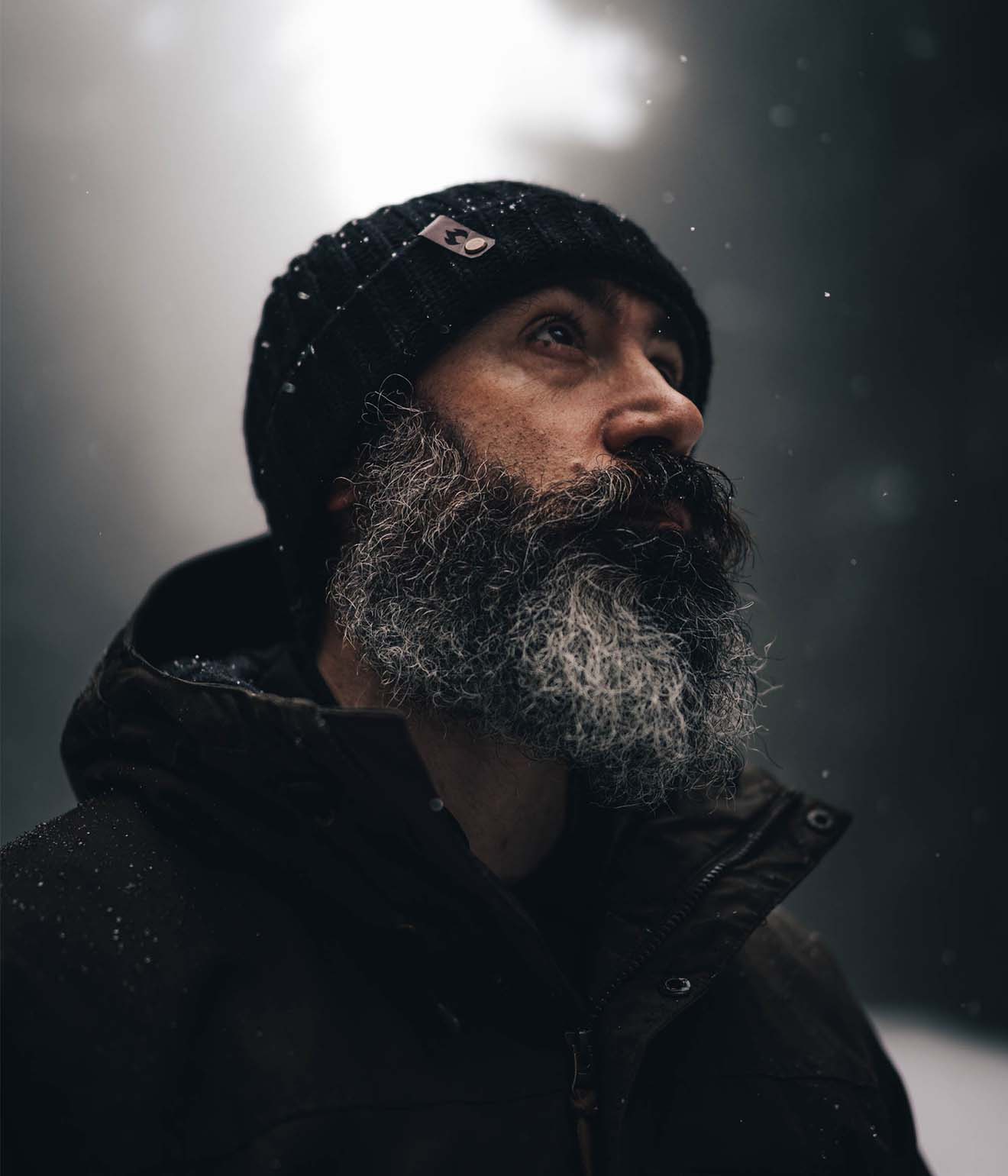
Alex Wander’s real name is Alessandro Bassi and he lives in Cervignano d’adda near Milan. He reports on his treks and ‘lost places’ on Instagram and his YouTube channel. What’s more, Alex and his colleague, Greymoose Dino, make bushcraft and survival knives that they sell via the website belonging to their company Wander Tactical.
1. What is bushcraft? And what’s survival?
“I define bushcraft as the ability to spend time outdoors safely and as self-sufficiently as possible, while using what nature gives us. It’s true that we do set out with man-made tools like a bushcraft knife. But, for me, the meaning of bushcraft isn’t about lots of equipment, but reducing everything to the minimum. This deliberate paring down allows us to be at one with nature because our focus is solely on the immediate environment.
Particularly at the outset, you could say that bushcraft is like camping but less comfortable. And the more we’ve honed our skills, for instance by foraging for food, the less man-made bushcraft tools we need.”
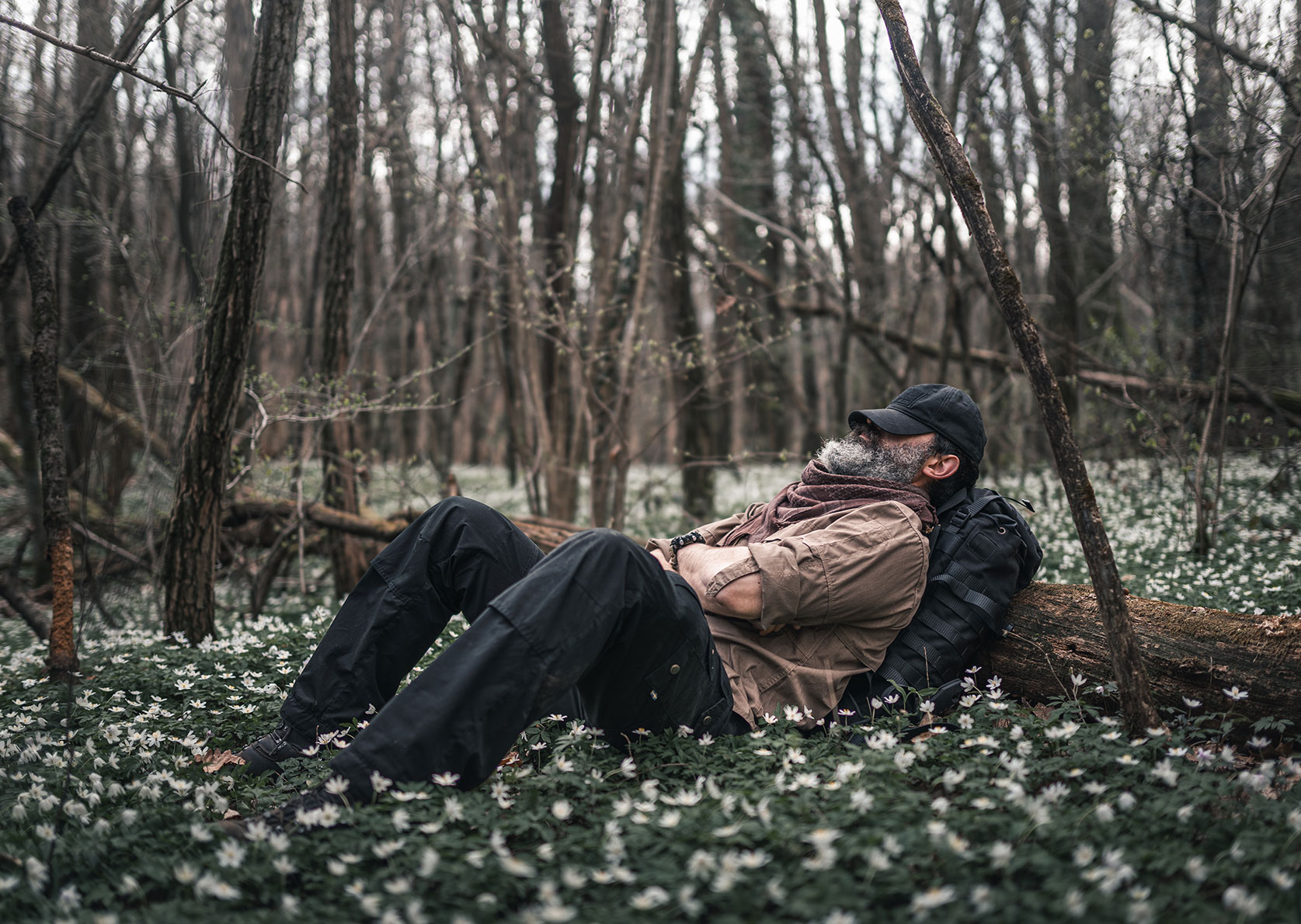
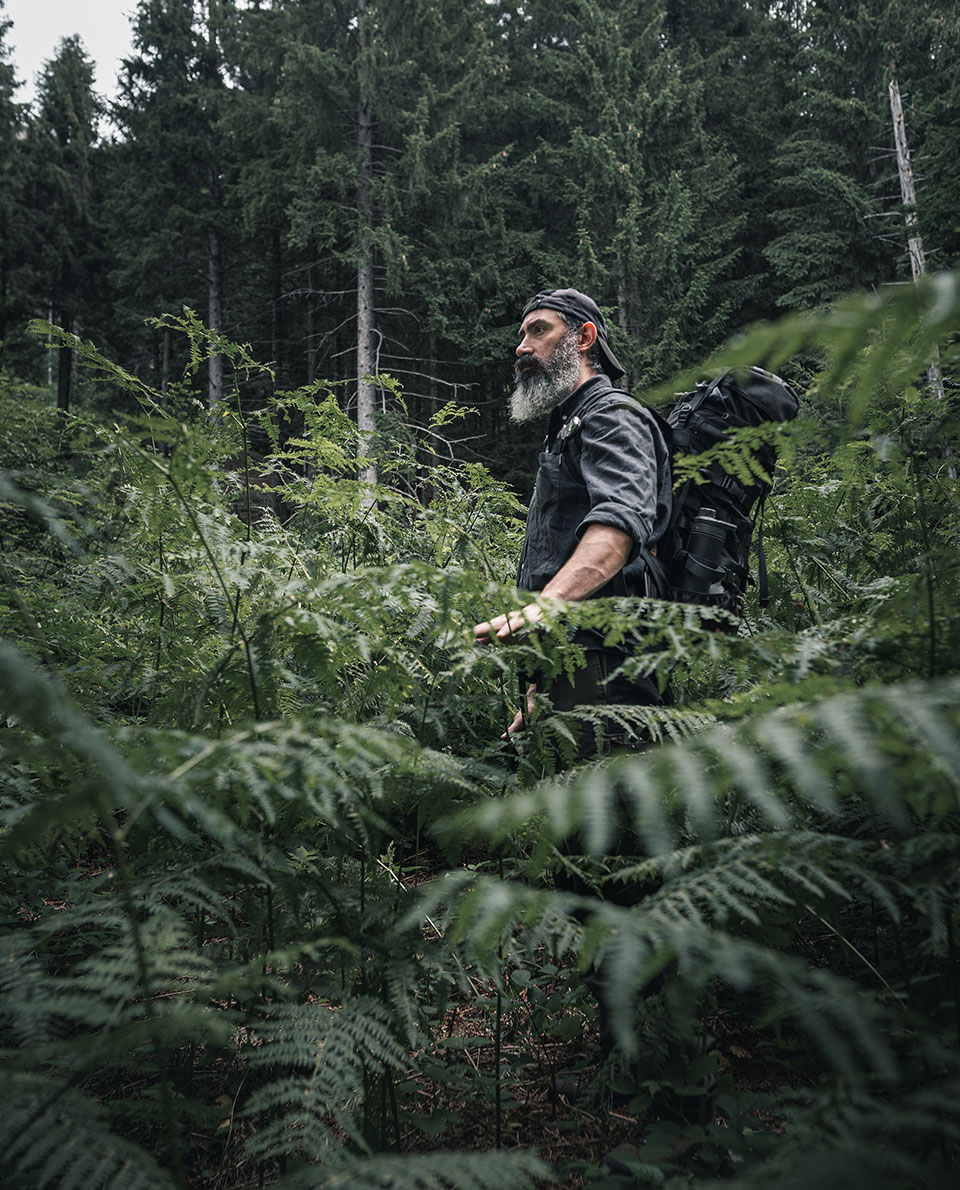
“Bushcrafting means choosing to spend time outdoors. Survival means escaping nature as quickly as possible.”
Alex Wander“Bushcrafting is all about choosing to spend time outdoors and enjoying it. That’s the difference between bushcraft and survival. Because survival is all about staying alive. That might be necessary if I’m trapped outside, after an accident for instance. Experiences of survival teach me how not to die while I’m outdoors. In those sorts of situations however, I always try to get back to civilization as quickly as possible.”
2. What bushcraft gear do I need?
“The following items are some of essential bushcraft kit:
- A bushcraft knife, but more about that in a minute.
- Protection from the rain, such as a tarpaulin.
- Thin cord such as paracord.
- A compass to help you navigate.
- A bottle for drinking water. One litre is the minimum. If it’s hot, or there’s nowhere to refill it, you’ll need more.
- A water-repellent, robust backpack that’s big enough.
- A first-aid kit (and you need to know how to use it).
- Hard-wearing outdoor clothing. Hiking clothing is fine for your first bushcraft trips, as long as it provides enough protection from the weather and cold.
- Waterproof hiking or trekking boots.
When I’m outdoors, I like wearing my HANWAG Alaska GTX best.”
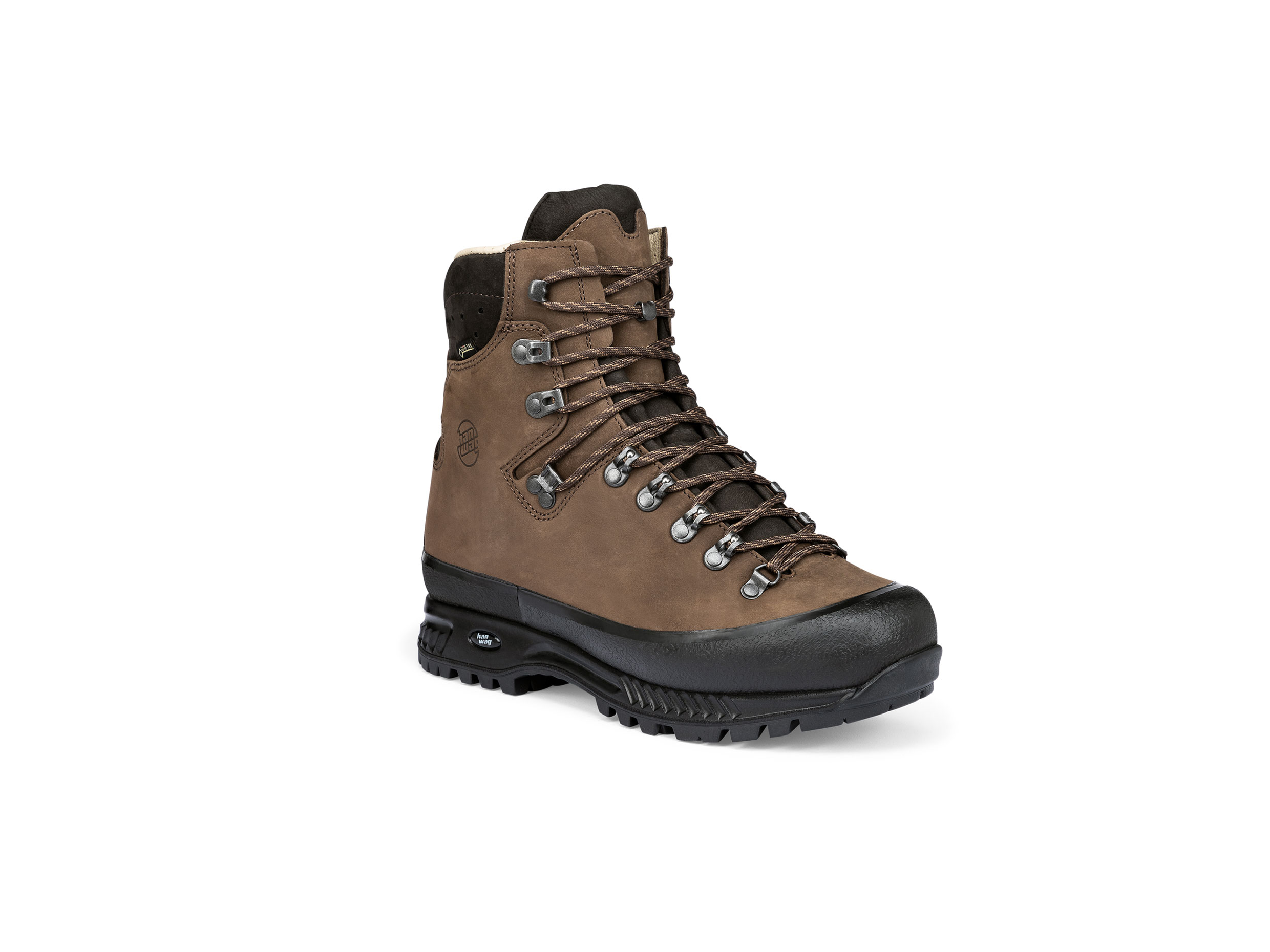
Alex’s bushcraft boots: the HANWAG Alaska GTX
“When bushcrafting, you’re often off the beaten track. Which is why a sturdy boot with a high upper is vital so that you don’t twist your ankle. And I recommend waterproof boots, particularly in autumn, winter, and spring, because you often walk through wet meadows or streams. My HANWAG Alaska GTX can do both and have been faithful companions for years.”
“Spending the night outdoors is not for absolute beginners. If you are experienced and know the score, then you’ll need the following items alongside the basic bushcraft gear:
- A tarpaulin that’s big enough to cover where you sleep. And a tent if the weather’s bad. And anyone seeking more comfort and who doesn’t like insects, could take a hammock.
- A sleeping mat (a foam version is more robust than inflatable ones) and a sleeping bag (one with man-made fibres is more practical than one filled with down).
- An electric lamp.
- A folding saw for timber.”
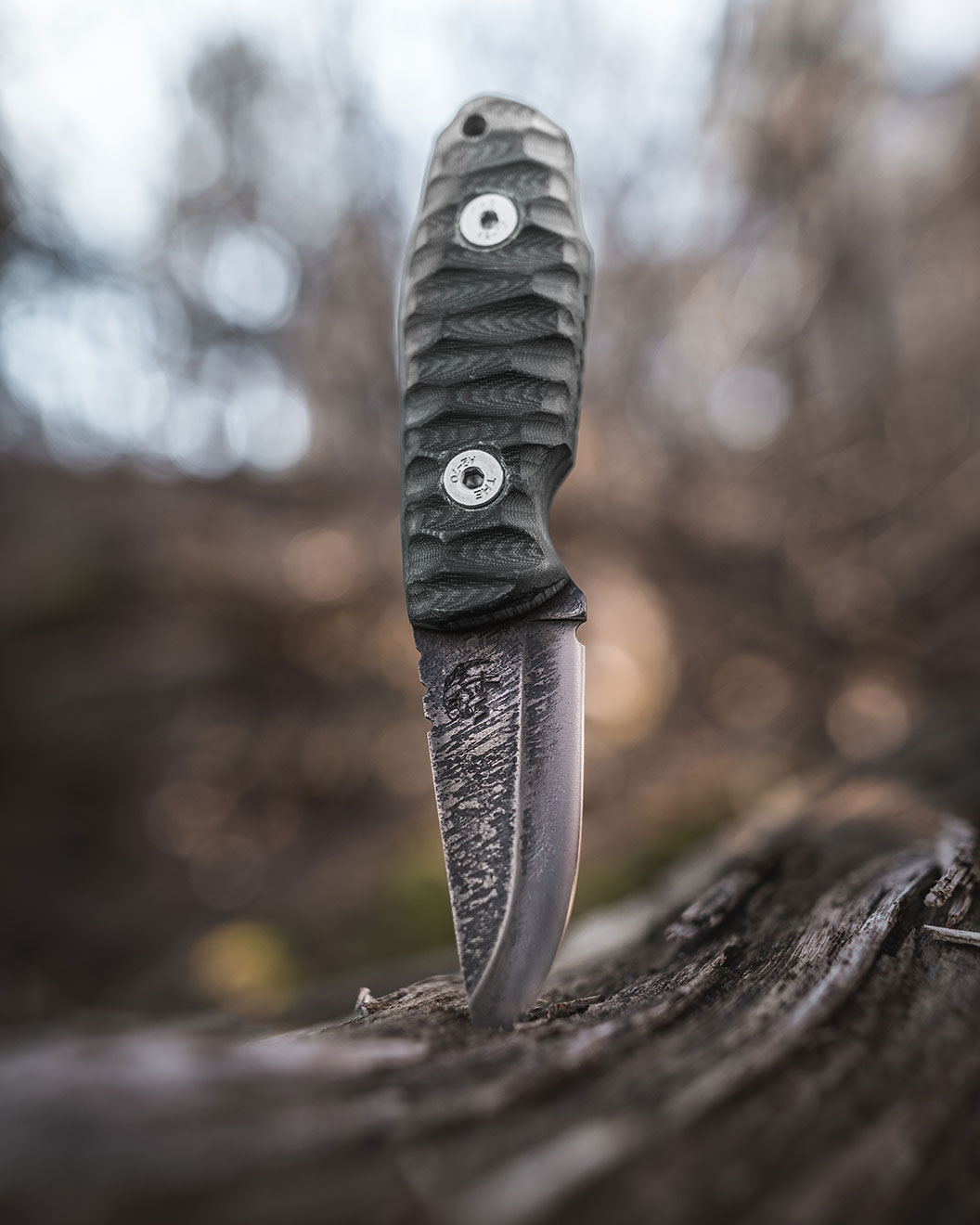
3. What’s the best bushcraft knife?
“The knife is the multipurpose tool when you’re bushcrafting. It’s not just used for cooking, but also for carving, sharpening pegs or making fire. A bushcraft knife should have a fixed blade. Because folding knives often aren’t sturdy enough and could cause injury if the blade were to snap back in again.
For beginners, I recommend a bushcraft knife like our Menoceras with a total length of 15 centimetres. The blade should have either a flat grind or a Scandi grind. And a shape that allows you to cut all sorts of things with it.
Bushcraft knives can cost a small fortune. But that’s not necessary at the start of your bushcraft career. But you should pick a high-quality starter knife that’s easy to handle. They cost around 150 euros.”
Please note: Making fires in the wild is prohibited in most countries – for good reason. You should only have campfires or camping stoves on private property where you have arranged permission from the landowner in advance. Moreover, you should exercise extreme caution with outdoor fires. Fires should never be made in prolonged periods of dry spells, when the risk of wildfires significantly increases.
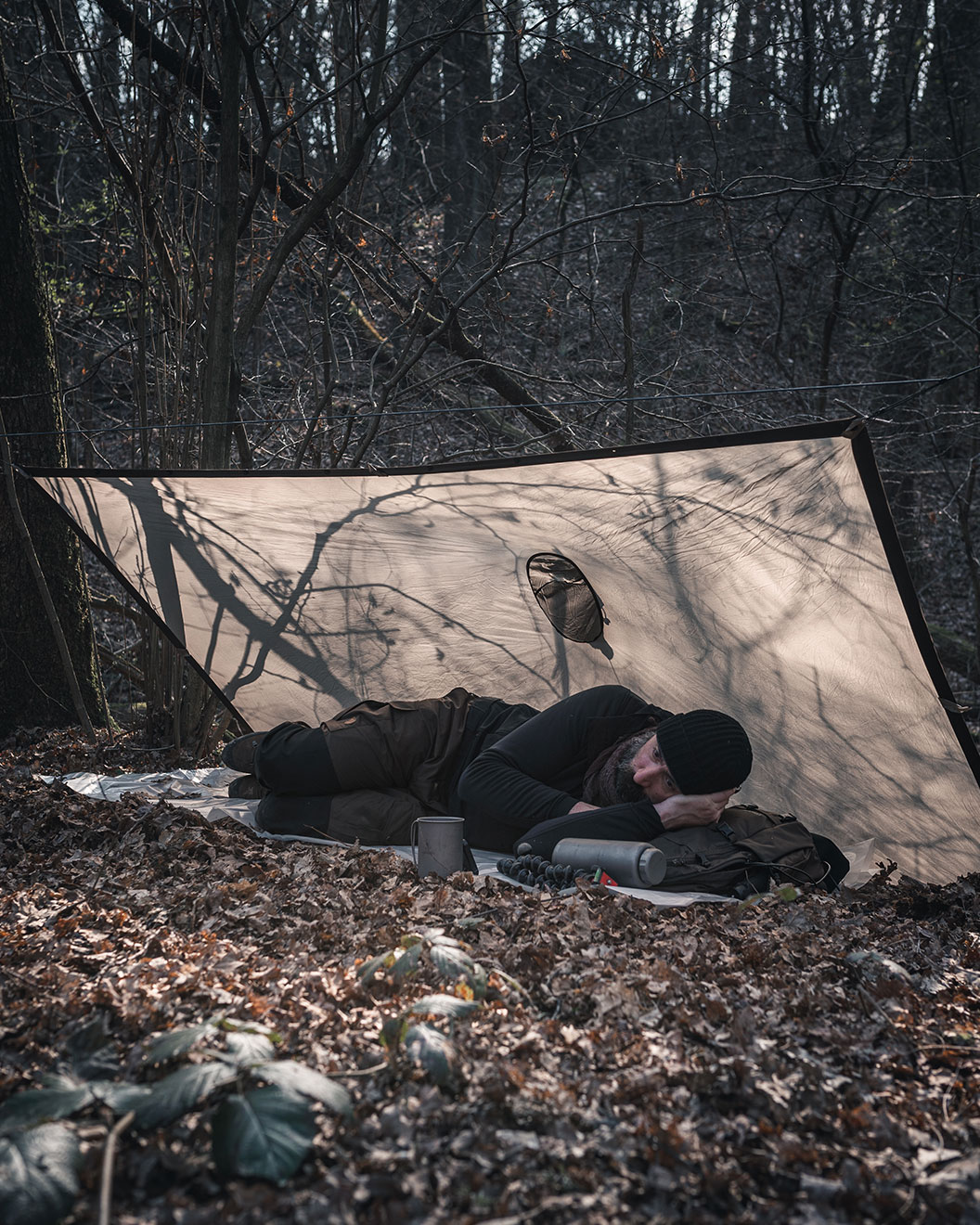
4. Where’s bushcrafting allowed?
“Heading into the woods to camp under the stars and cooking over an open fire – that’s the way most people picture bushcrafting. However, wild camping and making fire in forests is prohibited in most countries. In my home country, Italy, you’re only allowed to camp in an emergency. And carrying a knife with a fixed blade in public is also forbidden.
In the United Kingdom, for instance, you’re allowed to go into forests, off trails, and carve dead wood. But you’re not permitted to make a fire or camp, apart from in set areas designated by the Forest Service. In woods, you need to seek the landowner’s permission. Making campfires in Scotland is permitted. Obviously, you should keep open fires small, under control, and supervised. And remove all traces when you leave.
So where else is bushcraft legal? The rules in Norway or Sweden are relatively liberal. In those areas, what’s known as everyman’s right, permits wild camping as long as you stick to a few rules.
Before embarking on your bushcraft adventure, find out what you’re allowed and not allowed to do and obtain a permit if necessary. Sole bushcrafters have a good chance that forest owners will allow them to spend the night under a tarpaulin. And you have to take your rubbish with you of course. That should go without saying anyway where bushcrafting is concerned, because the maxim is to show respect for nature.”
5. What skills should a bushcraft beginner have?
“During bushcrafting, you learn something new every day. In fact, what’s appealing is that we learn our ancestors’ techniques and skills that have been lost these days. As a beginner, you don’t need much experience, look forward to a steep learning curve instead.”
“As a bushcraft beginner, you don’t need much experience. Look forward to an exciting learning curve instead.”
Alex Wander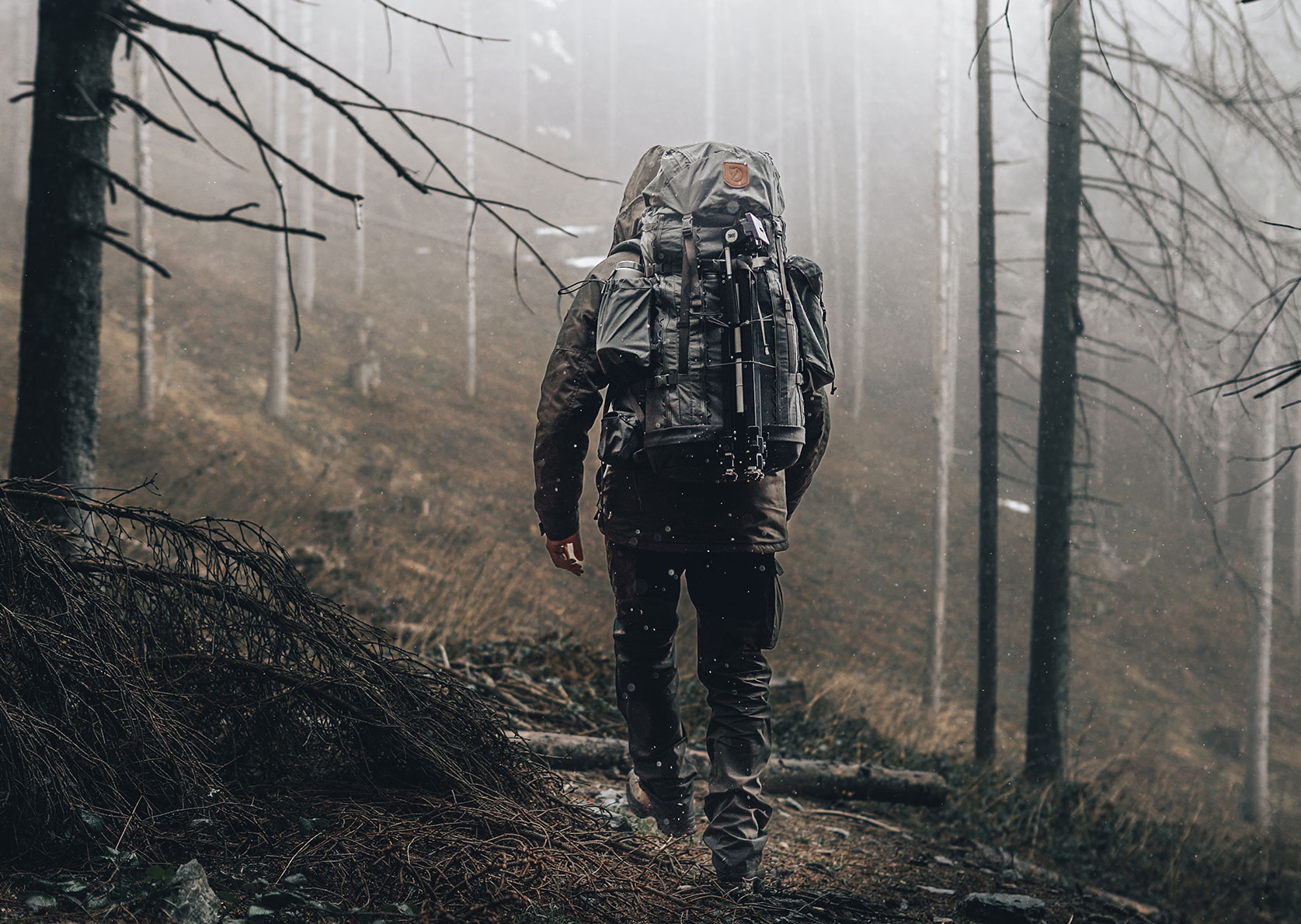
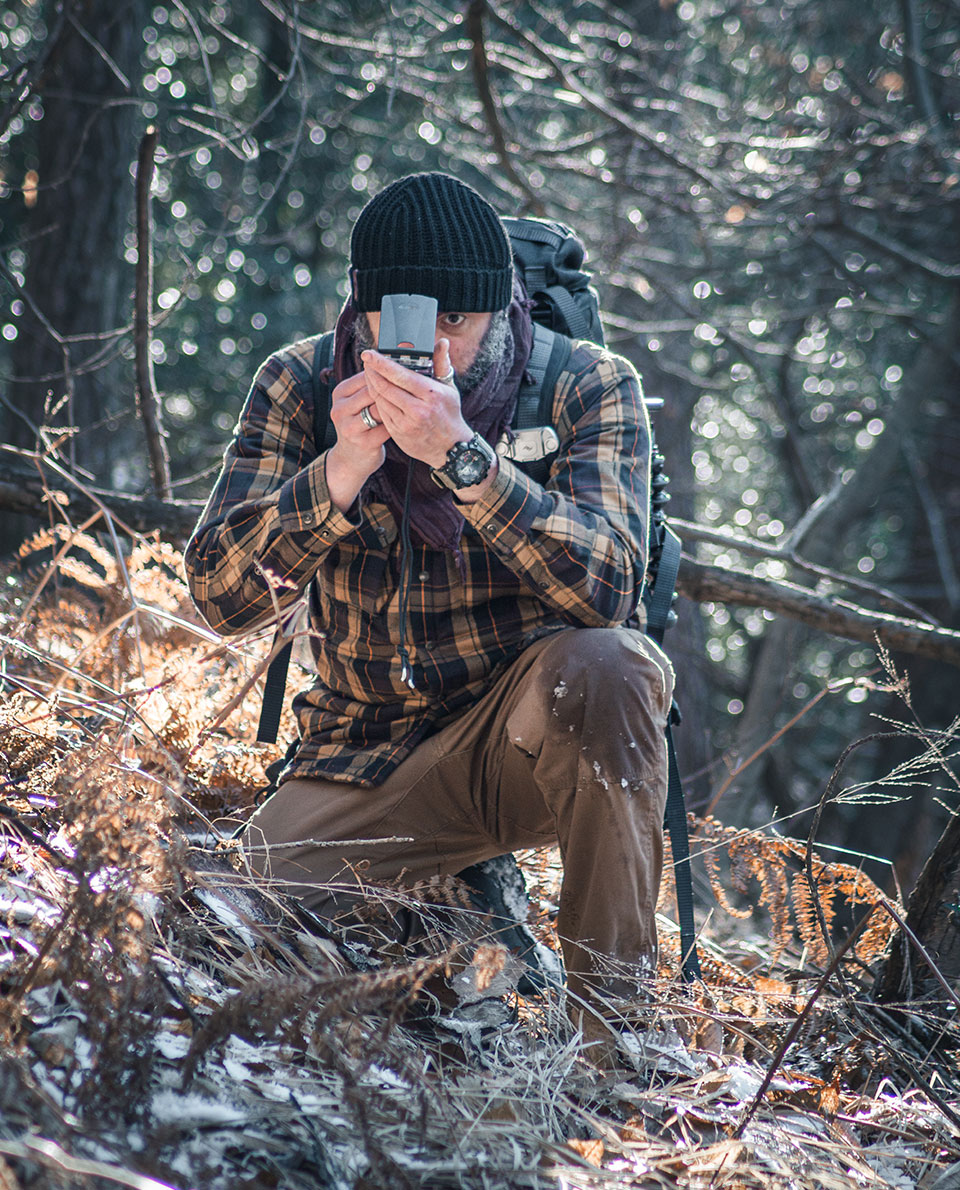
Always stay up to date: Subscribe to the HANWAG newsletter and become part of our community.
“However, some bushcraft beginner basic skills are helpful if you want to enjoy bushcrafting. Most importantly, you need to love nature. Which involves not being too bothered about its downsides, such as the weather or pesky insects. Manual dexterity is definitely an advantage too. A good sense of direction also helps because bushcrafters are usually off the beaten track.
Over time, you can learn everything else such as spending the night outside.”
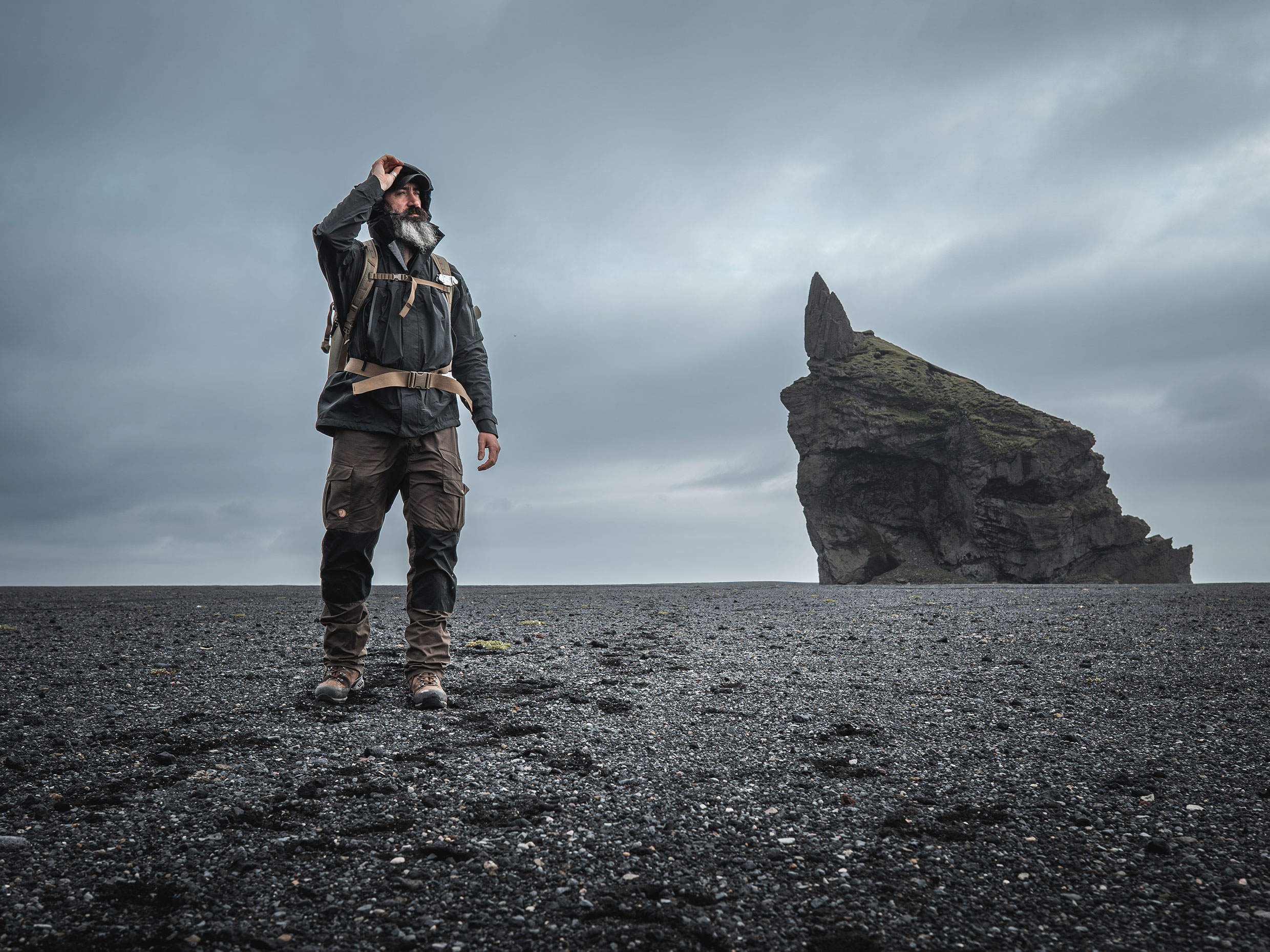
6. Is bushcraft better on your own or in a group?
“Initially, I was usually on my own and taught myself most of the bushcraft basics. I realised that the more I discovered about nature, the more I learnt about myself too. Bushcrafting on your own is an excellent way of getting to know yourself. And to teach yourself the ropes, head over to YouTube to find how-to videos on every aspect of bushcraft.
Now I also enjoy bushcrafting in great company, such as with my brothers or girlfriend Erika. The advantage is that you share the chores and the experience. For beginners, it’s definitely not a bad idea to do the first few trips with experienced bushcrafters. You need to watch what they’re doing closely, but not just simply copy everything. Sometimes it’s better to develop your own methods. Because in bushcrafting many roads often lead to Rome.”
7. How do I plan my first bushcraft adventure?
“You shouldn’t pick too difficult terrain for your first bushcraft experience, but just a normal flat forest. And a day that’s dry and warm. Leave bushcraft in winter to the more experienced.
Roam through the forest and memorise landmarks, such as rocks, that will help you find your way. Identify the main tree species and find out what you can make from their wood. Then you’ll also learn how to bushcraft by using the knife safely.
For your first bushcrafting experience, just take food and drink from home with you. You don’t need to spend the night outside at the beginning either. If you do, then just plan to do so for one night. And you’ll soon see that sleeping in the wilderness is an art in itself. Anyone who sleeps well during a bushcraft night is definitely a professional.”
Conclusion: Enjoy nature and stay safe
Alex believes that bushcraft is about enjoying nature and not taking any risks:
“I suggest erring on the side of caution, particularly at the beginning. Because nature can be tough, despite all the romantic aspects we see on Instagram. So develop a relationship with nature and all its facets first. Do you enjoy being outside even in bad weather? if you realise what your comfort zone is, you can leave it step by step. Each new experience will make you more and more familiar with nature and embrace it.”


